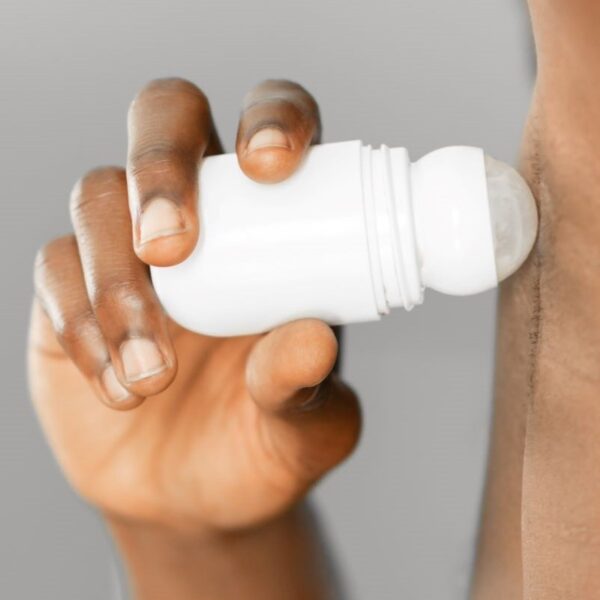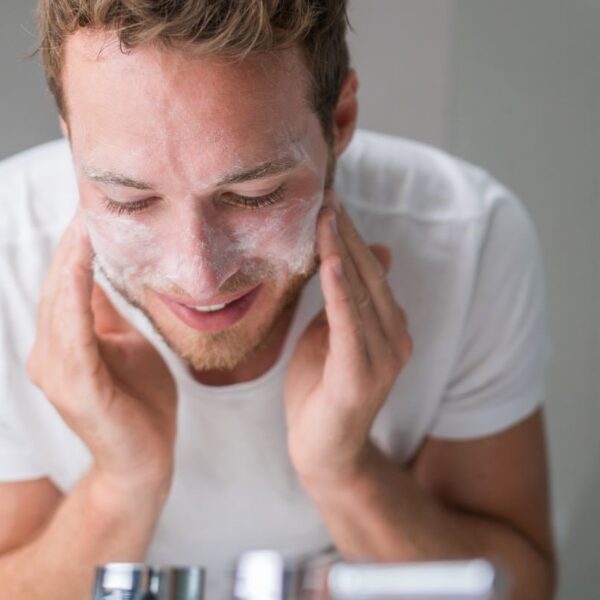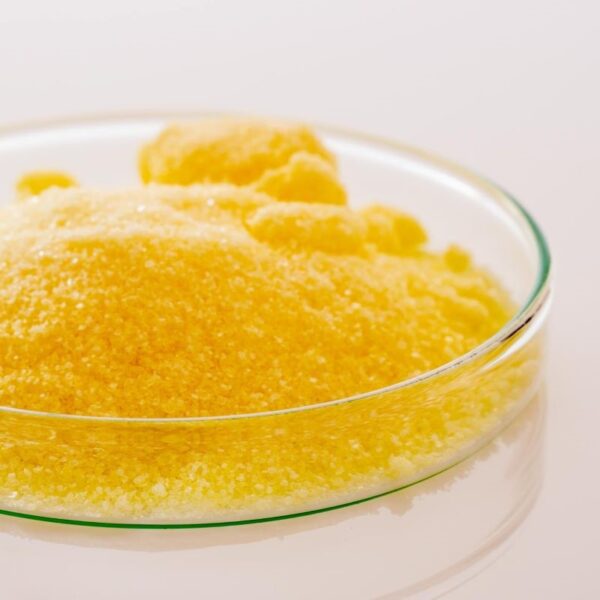Benzalkonium Chloride (BAC) are a group of quaternary ammonium compounds widely used in various industry applications for their antimicrobial properties.
Benzalkonium Chloride also serves as a powerful preservative, extending the shelf life of various products. BAC is particularly effective at preventing the growth of bacteria and fungi, which can cause products to spoil or become contaminated.
This article explores Benzalkonium Chloride (BAC) uses, properties, sources, and applications across various personal care and cosmetic products — along with information regarding the regulatory environment governing its use in product development.
What is Benzalkonium Chloride?
Benzalkonium chloride (BAC), also known as Alkyl Dimethyl Benzyl Ammonium Chloride (ADBAC) is an Organic salt classified as a Quaternary Ammonium Compound (QAC). Benzalkonium chloride is a quaternary ammonium mixture of alkyl, dimethyl and benzyl ammonium chlorides. Benzalkonium Chloride is prepared by quaternization condensation of Dodecyl Dimethyl Tertiary Amine with Benzyl Chloride. Quaternary ammonium compounds are surface-active agents, many of which precipitate or denature proteins and destroy microorganisms. Benzalkonium chloride is an antiseptic and disinfectant, it is active against a broad spectrum of bacteria, fungi, molds.

Use of Benzalkonium Chloride in Cosmetics and Personal Care Products
Benzalkonium Chloride is a preservative, antimicrobial agent, and cationic surfactant in cosmetics and personal care products. It’s most often found in conditioning shampoos, soaps, skin cleansers, skin care, and eye makeup preparations. Its functions include:
Preservative
Used for its antibacterial effects, Benzalkonium Chloride helps to stabilize formulations and prevent user contamination. Ensuring the product remains stable and bacteria-free is integral to the formulation process. It improves product safety and ensures longevity while its antibacterial properties make it useful as a topical ingredient in antibacterial hand wipes, antiseptic creams, and anti-itch ointments.
Antibacterial
Benzalkonium chloride is an antibacterial agent that stops the growth of bacteria and fungi. The extended alkyl group of BAC interferes with the double-layered bacterial cell membrane by destroying it, leaking the cell contents, and inhibiting additional bacterial growth.
Conditioning Cationic Surfactant
BAC contains a positive charge in its hydrophilic head. They represent the most potent conditioning agents for the skin and hair. As the overall surface charge of the skin and hair is negative, cationic surfactants are electrostatically attracted to these negative sites.
Antistatic
Benzalkonium chloride reduces static electricity by neutralizing the electrical charge on a surface. This reduction helps in the manageability of hair along with the conditioning effect.
Applications in Cosmetics and Personal Care Products
| Hand sanitizer wipes, Antiseptic creams, and Anti-itch ointments | – Its antibacterial properties are why it frequently appears as a topical ingredient in these products – Benzalkonium chloride is used in Hand sanitizer wipes as antibacterial active (in a concentration of approximately 0.1%) |
| Cosmetics | Antimicrobial properties help protect products from spoiling |
| Consumer products, including Detergents and other Cleaning Products | BAC effectively kill bacteria and other microorganisms, making them a common ingredient in products designed for household disinfection and cleaning |
| Other Products | Rash creams, Foot odor powder, Facial lotion, Cleansers, Makeup, Sunscreen, Antimicrobial soaps, Skin antiseptics, and Spermicides |
Properties of Benzalkonium Chloride
| Appearance at 25 °C | 100% is white or yellow powder; gelatinous lumps; BC (50%) and BC (80%) solutions are colorless to pale yellow solutions. |
| pH (10% Aqueous) | 6.5-7.15 |
| Viscosity, cps at 25°C | 60-75 |
| Specific Gravity | 0.98 |
| Solubility | Freely Water soluble, Alcohol, Acetone. Aqueous Solution froths when shaken. |
| Odor | Aromatic Odor |
| Shelf Life | 24-36 months |
| Storage Condition | Store below +30°C. The bulk material should be stored in an airtight container, protected from light and contact with metals, in a cool, dry place. |
| Stability | Stable. Incompatible with strong oxidizing agents, moisture. Hygroscopic. |
Typical Formulations
Dual Phase Make-Up Remover
An efficient makeup remover for stubborn eye makeup and long-lasting lip color. The product consists of a mild surfactant system, humectants and utilizes the emollient lauryl laurate, posing dual action of slip agent and to lift away makeup and condition the skin. The formulation is further stabilized with the chelating agent, EDTA and a preservative system of Benzalkonium Chloride.
Here is an example of a dual-phase makeup remover formulation table with benzalkonium chloride along with the % weight of ingredients:
| Phase | Function | INCI Name | % Wt. |
|---|---|---|---|
| A | – Carrier – Chelating Agent – Surfactant – Skin Soothing – Humectant – Electrolyte – Preservative – Dye | – Aqua – Disodium EDTA – Lauryl Methyl Gluceth-10 Hydroxypropyldimonium Chloride – Glycerin (and) Aqua (and) Rosa Canina Fruit Extract – Hexylene Glycol – Sodium Chloride – Benzalkonium Chloride – Blue 1 (CI 42090) | 96.85 0.05 0.2 1.0 0.8 0.5 0.5 0.45 |
| B | – Emollient/Slip agent – Emollient – Emollient – Emollient | – Lauryl Laurate – Dimethicone – Cyclopentasiloxane – Isododecane | 20.0 30.0 25.0 25.0 |
Formulation Procedure
- Combine phase A ingredients one at a time, mixing well after each addition.
- In a separate vessel, combine Phase B ingredients, heating slightly until clear and uniform.
- Allow to cool to RT.
- Combine Phase A and Phase B in the final container in appropriate ratios (suggested 65% Phase A, 35% Phase B).
Benzalkonium Chloride Formulation Considerations
- Benzalkonium Chloride is typically freely soluble in water. It can be compatible with the aqueous phase and aqua-based formulations such as skin toners, mists, and emulsion systems such as o/w formulations.
- The typical concentration range varies from 0.004% to 0.1%, depending on the system.
- Regulations indicate that the concentration should be under 0.1%.
Benzalkonium Chloride Safety & Regulatory Considerations
The Food and Drug Administration (FDA) permits Benzalkonium Chloride in Over-the-Counter (OTC) first-aid antiseptic drug products. The Cosmetic Ingredient Review (CIR) Expert Panel assessed the safety of Benzalkonium Chloride. The CIR Expert Panel evaluated scientific data and concluded that Benzalkonium Chloride, at concentrations up to 0.1% free, was safe as a cosmetic ingredient. Benzalkonium Chloride is moderate to slightly toxic orally (LD₅₀ between 50-500 mg/kg) and is corrosive to skin and eyes at 50% active.
Potential Adverse Effects of Benzalkonium Chloride
Benzalkonium Chloride (BAC) can have adverse effects if misused or in excessive amounts. BAC toxicity can vary depending on the compound’s concentration and exposure duration.
BACs are generally safe for use in personal care products when used as directed. However, if they are ingested or come into contact with the eyes or mucous membranes, they can cause irritation, inflammation, and in severe cases, tissue damage. Its prolonged contact with the skin can occasionally cause irritation and hypersensitivity. Studies have also suggested that prolonged exposure to BAC may lead to the development of antibiotic-resistant bacteria, which can be a severe public health concern.
In addition, some individuals may be more sensitive to BACs than others and may experience allergic reactions or skin irritation when exposed to even low compound concentrations.
Fun Facts About Benzalkonium Chloride
- Benzalkonium Chloride is a commonly used preservative in contact lens solutions.
- Benzalkonium Chloride is bactericidal, meaning they kill bacteria effectively. They work by disrupting the cell membrane of the bacteria, which can lead to cell death.
- Benzalkonium Chloride is a biocide, a chemical substance that controls or eliminates harmful microorganisms.




